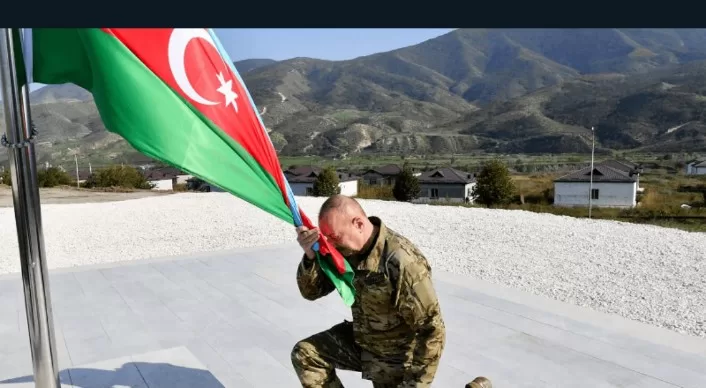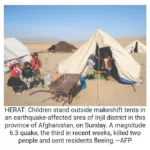BAKU — In a historic moment, President Ilham Aliyev of Azerbaijan proudly raised the national flag in the capital of Nagorno-Karabakh, known as Khankendi by Azerbaijan and Stepanakert by Armenians. This symbolic act comes on the heels of a lightning military operation last month, which successfully brought the territory back under Baku’s control.
Addressing the nation, President Aliyev expressed the profound significance of this achievement, stating, “We achieved what we wanted. We fulfilled the dream the Azerbaijani people have lived with for decades,” during his speech in Karabakh’s main city.
The capital of Nagorno-Karabakh fell into Azerbaijani hands after a forceful operation by Azerbaijani security forces that effectively neutralized ethnic Armenian fighters. This military campaign resulted in the displacement of the majority of Karabakh’s 120,000 ethnic Armenian residents, who sought refuge in Armenia.
Nagorno-Karabakh, known as Artsakh by Armenians, is a mountainous landlocked region situated in the South Caucasus. The dispute over this territory dates back to the fall of the Russian Empire in 1917, as both Azerbaijan and Armenia laid claim to it, causing a long-standing point of tension. During the Soviet era, it remained part of the Azeri Soviet Republic but had a degree of autonomy.
With the disintegration of the Soviet Union, the First Karabakh War erupted from 1988 to 1994, pitting Armenians against their Azerbaijani neighbors. The conflict resulted in a tragic loss of about 30,000 lives and the displacement of over a million people.
Following the war, Azerbaijan found itself without control over a significant portion of its territory, as Armenians retained authority over most of Karabakh and additional areas surrounding its perimeter. Azerbaijan vowed to regain control over this territory.
This development marks a turning point in the complex history of Nagorno-Karabakh, offering hope for a new chapter in the South Caucasus region.







